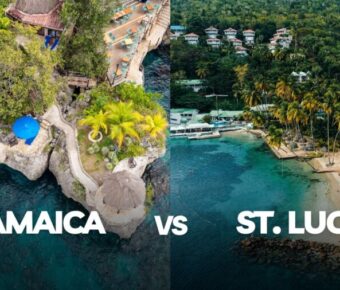
Washington DC vs Baltimore: Which Historic East Coast City Offers Better Value in 2025?
Washington DC and Baltimore sit just 40 miles apart on the East Coast, yet these two cities feel worlds apart in many ways. Each has its own distinct personality, culture, and vibe that sets it apart from its neighbor. DC offers world-class museums, iconic monuments, and polished neighborhoods filled with politics and power, while Baltimore charms visitors with its authentic working-class spirit, historic harbor, and more affordable cost of living.
The weather patterns in these Mid-Atlantic cities share similarities, with humid summers and mild winters. Baltimore tends to see a bit more snow, averaging 20 inches per year compared to DC’s 15 inches. The pace of life differs too – DC runs on government schedules and power lunches, while Baltimore keeps things more laid-back and neighborly.
Contents
- Geographical Overview and Climate
- Climate Differences
- Proximity and Access
- Historical Significance and Monuments
- Washington DC’s Rich History
- Baltimore’s Historical Journey
- Key Monuments and Historical Sites
- Cultural Scene and Entertainment
- Art and Museums
- Music and Nightlife
- Festivals and Events
- Economy and Employment Opportunities
- Key Industries
- Job Market Analysis
- Cost of Living and Housing Market
- Living Expenses Comparison
- Housing Costs and Trends
- Education and Universities
- Educational Institutions
- Research and Development
- Public Services and Transportation
- Transportation Systems
- Public Amenities
- Safety and Crime Rates
- Law Enforcement Strategies
- Public Safety Programs
- Lifestyle and Recreational Activities
- Dining and Cuisine
- Outdoor Leisure and Sports
- Demographics and Population Dynamics
- Population Trends
- Cultural Diversity
- Frequently Asked Questions
- What are the cost of living differences between Washington DC and Baltimore?
- How do the crime rates in Washington DC compare to those in Baltimore?
- Which city offers a more favorable living experience, Washington DC or Baltimore?
- Can Baltimore be considered part of the Washington DC metropolitan area?
- Which city is larger in terms of population and area, Washington DC or Baltimore?
- How do the entertainment and cultural amenities differ between Baltimore and Washington DC?
- More Travel Guides
Geographical Overview and Climate
Washington DC and Baltimore sit about 40 miles apart along the mid-Atlantic coast. Both cities experience similar weather patterns due to their location near the Chesapeake Bay, though each has unique geographical features that create subtle climate differences.
Climate Differences
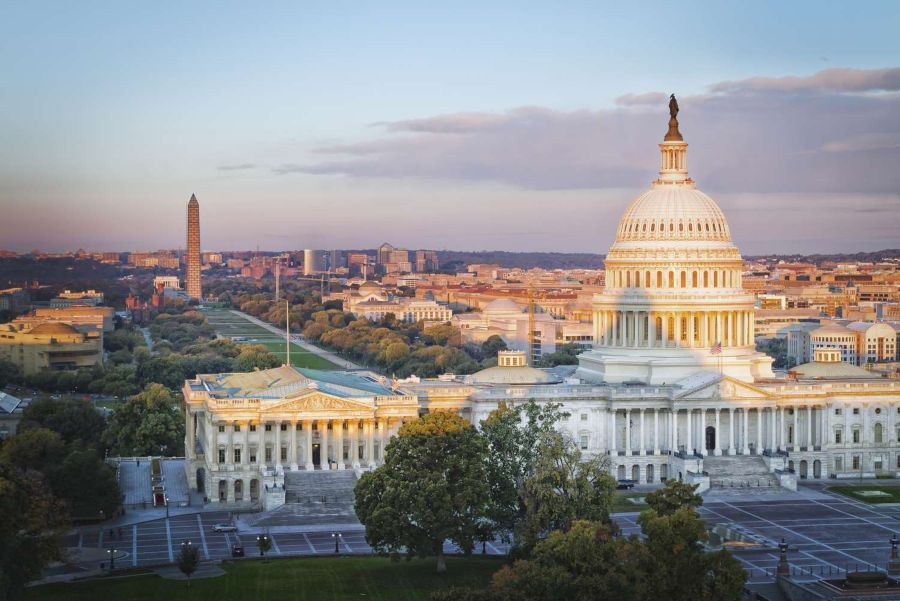
Both cities have humid subtropical climates with four distinct seasons. DC’s average July high reaches 88.5°F, while Baltimore hits 88.1°F. Winter brings more variation – DC’s January low drops to 26.5°F compared to Baltimore’s 27.4°F.
Rain patterns differ slightly between the cities. DC gets 43.3 inches of annual rainfall, while Baltimore sees 42.3 inches. The bigger difference comes with snow – DC averages 13.7 inches per year, while Baltimore gets about 18.5 inches.
The Chesapeake Bay impacts Baltimore’s weather more directly. This creates slightly more moderate temperatures and increased humidity compared to DC.
Proximity and Access
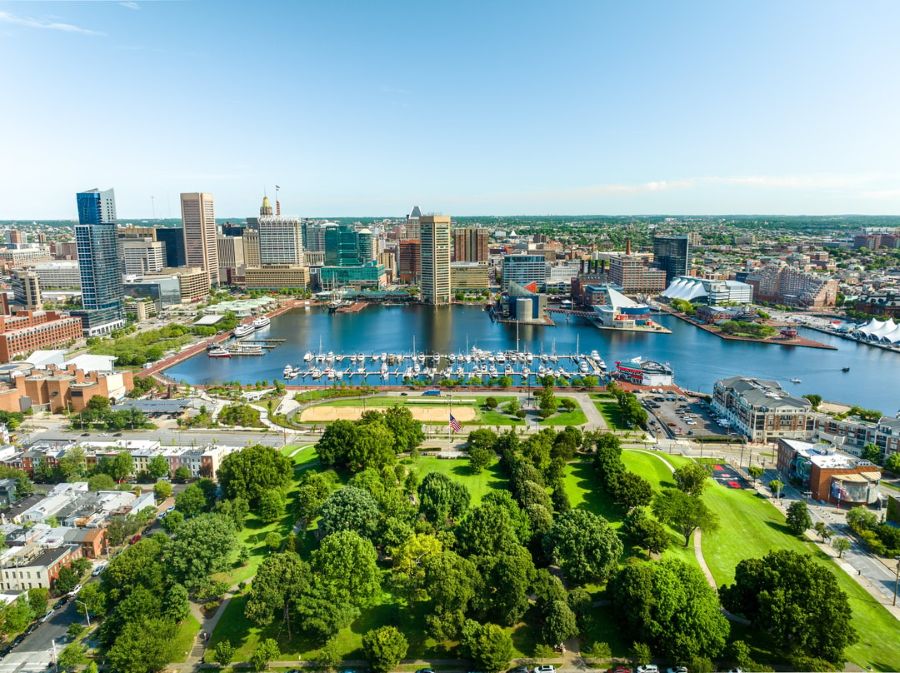
Baltimore covers a larger area at 80.8 square miles compared to DC’s 61.4 square miles. DC packs in more people though, with 10,912 people per square mile versus Baltimore’s 7,134 people per square mile.
Both cities connect via I-95 and regular train service, making travel between them quick and simple. The trip takes about an hour by car or 40 minutes by train.
The cities’ proximity to water shapes their layout. Baltimore’s Inner Harbor remains a major feature, while DC sits along the Potomac River. This creates different neighborhood patterns and affects how people move through each city.
Historical Significance and Monuments
Both cities played crucial roles in shaping American history, with each offering unique monuments and historical sites that tell different parts of the nation’s story. Washington DC emerged as the seat of federal power, while Baltimore’s maritime heritage and military importance left lasting marks on American history.
Washington DC’s Rich History
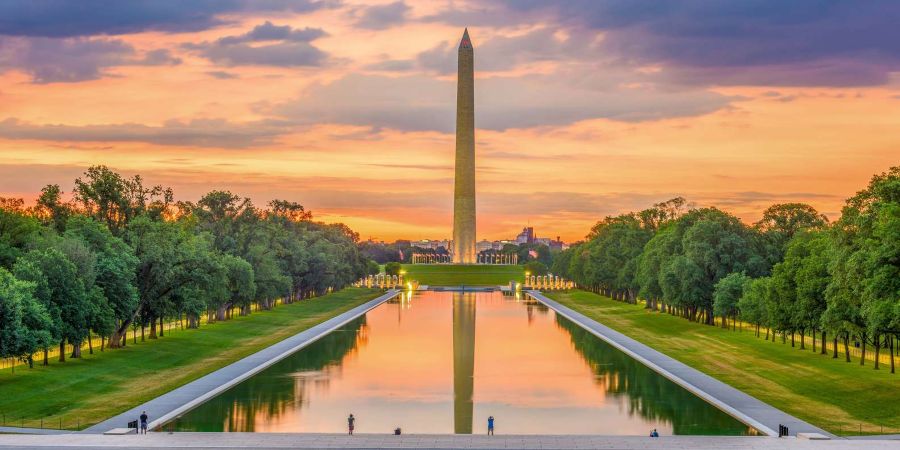
The nation’s capital stands as a living museum of American democracy. The city took shape in 1790 when Congress chose the Potomac River site for the new federal district. Pierre L’Enfant designed the city’s distinctive grid pattern with grand boulevards.
The National Mall represents the heart of American history and democracy. This two-mile stretch holds many of the country’s most important monuments and museums. The Smithsonian museums preserve countless artifacts from American history.
The Lincoln Memorial, Jefferson Memorial, and Vietnam Veterans Memorial share stories of triumph and sacrifice. Each monument draws millions of visitors wanting to connect with American history.
Baltimore’s Historical Journey
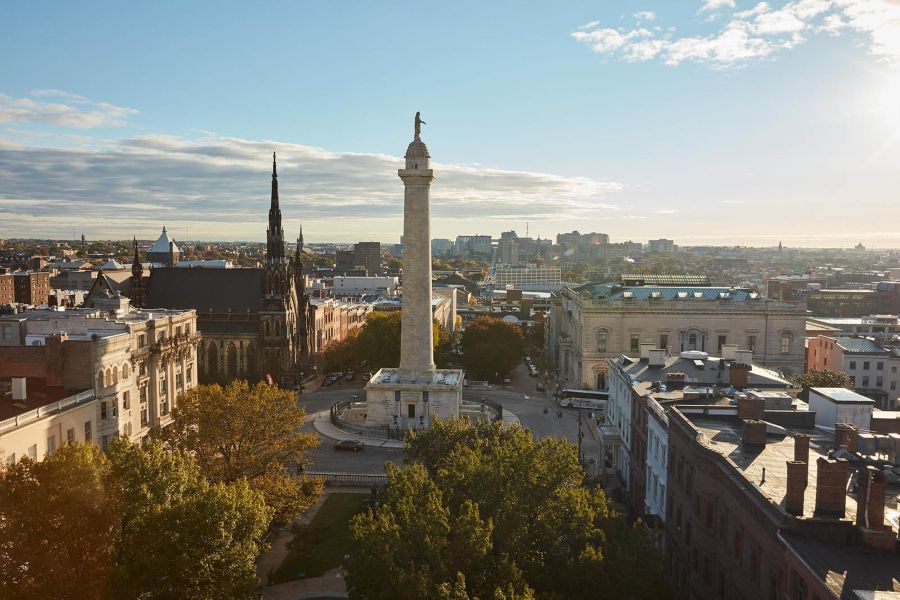
Baltimore’s story begins as a busy port city in 1729. The city gained fame by defending Fort McHenry against British attacks in 1814, inspiring Francis Scott Key to write “The Star-Spangled Banner.”
The city built America’s first Washington Monument in 1829, fifteen years before DC’s version started construction. This 178-foot column stands in the Mount Vernon neighborhood as a proud symbol of Baltimore’s early patriotism.
The Inner Harbor transformed from a busy 18th-century port into a modern tourist attraction. Many historic ships dock here, including the USS Constellation, the last all-sail warship built by the U.S. Navy.
Key Monuments and Historical Sites
Washington DC Highlights:
- U.S. Capitol Building
- Washington Monument (555 feet tall)
- White House
- World War II Memorial
- Korean War Veterans Memorial
Baltimore Landmarks:
- Fort McHenry National Monument
- Baltimore Washington Monument
- Federal Hill Park
- B&O Railroad Museum
- Edgar Allan Poe’s Grave
Fort McHenry remains Baltimore’s most famous historical site. This star-shaped fort protected the city in 1814 and now welcomes visitors to explore its grounds and museum.
The U.S. Capitol serves as both a working legislature and a museum of American democracy. Its dome stands as one of the most recognized symbols of American government.
Cultural Scene and Entertainment
Both Washington DC and Baltimore offer rich cultural experiences with distinct personalities. DC shines with its world-class museums and political energy, while Baltimore brings charm through its authentic arts scene and maritime heritage.
Art and Museums
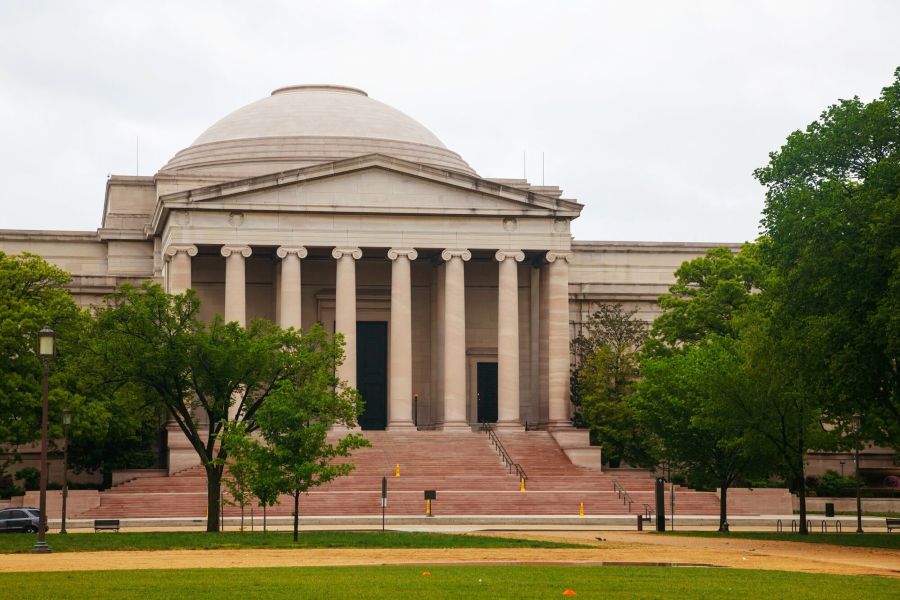
The National Mall in DC stands as an incredible collection of free Smithsonian museums. The National Gallery of Art showcases masterpieces from around the world, while the Hirshhorn Museum displays striking modern art installations.
Baltimore’s art scene feels more grassroots and experimental. The Baltimore Museum of Art houses the largest Matisse collection in the world. The American Visionary Art Museum celebrates self-taught artists with quirky, unconventional exhibits.
Small art galleries dot neighborhoods like DC’s Georgetown and Baltimore’s Station North Arts District. Street art and murals bring color to Baltimore’s walls, especially in areas like Graffiti Alley.
Music and Nightlife
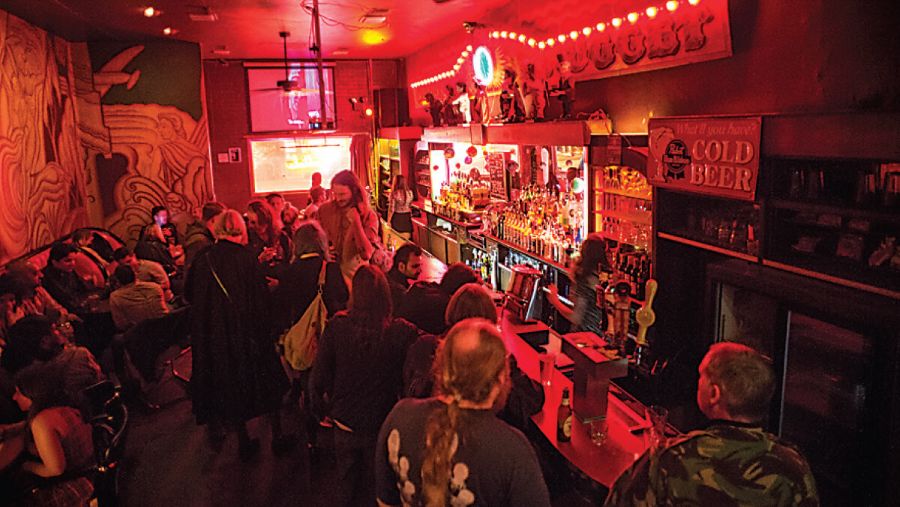
DC’s nightlife centers around upscale lounges and cocktail bars in areas like U Street and Adams Morgan. The 9:30 Club and Black Cat host indie rock shows, while the Kennedy Center presents classical performances and Broadway shows.
Baltimore’s music venues and entertainment spots lean more casual and gritty. The historic 8×10 club features local bands and jazz artists. Fell’s Point buzzes with live music pouring from corner bars.
Each city’s scene matches its personality – DC tends toward polished productions while Baltimore embraces raw talent and DIY spirit.
Festivals and Events
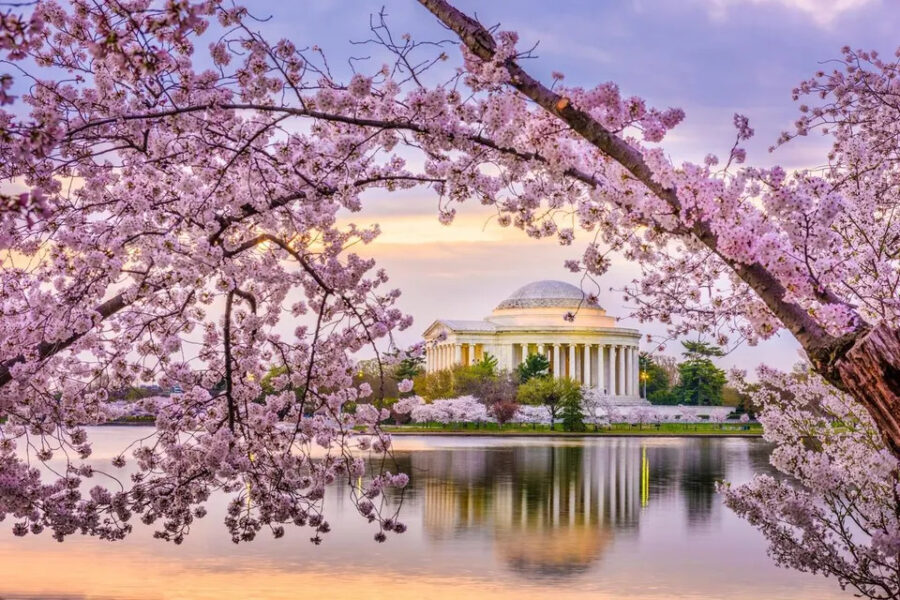
DC’s festival calendar includes major events like the National Cherry Blossom Festival and Smithsonian Folklife Festival. Political rallies and protests add an activist energy throughout the year.
Baltimore’s festivals celebrate local culture, like HONfest in Hampden and the Maryland Film Festival. The city comes alive during Artscape, America’s largest free arts festival.
Both cities host food festivals showcasing their specialties – DC’s international restaurant week contrasts with Baltimore’s seafood festivals. Summer brings outdoor concerts and cultural celebrations to parks and waterfronts in both cities.
Economy and Employment Opportunities
The job markets in Washington DC and Baltimore show notable differences in their economic foundations and career prospects. DC’s federal government presence creates higher salaries and more stable jobs, while Baltimore’s diverse industry mix offers unique opportunities in healthcare and maritime sectors.
Key Industries
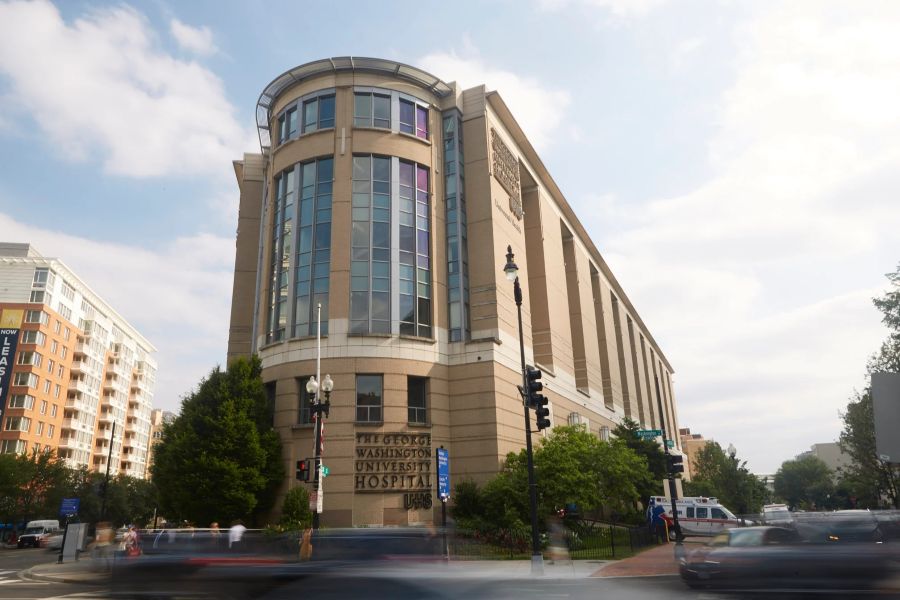
Washington DC’s economy centers on federal government operations and related contractors. The city has seen major growth in professional services, tech companies, and consulting firms that support government work. Many top law firms and lobbying groups call DC home.
Baltimore’s economy thrives on healthcare and medical research, with Johns Hopkins leading the way. The Port of Baltimore generates thousands of jobs in shipping and logistics. Manufacturing still plays a role, though smaller than in past decades.
Job Market Analysis
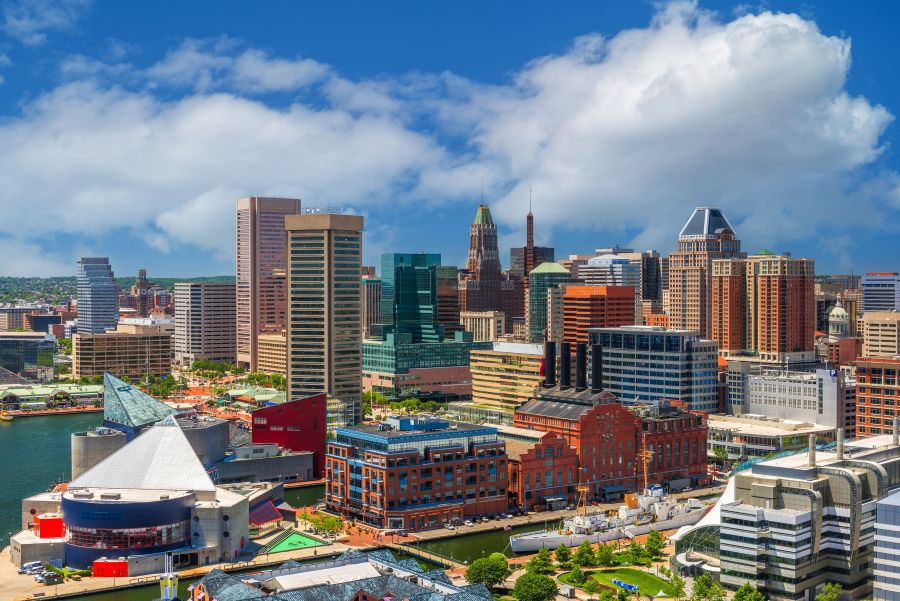
DC’s unemployment rate stays consistently lower than Baltimore’s. The median household income in DC reaches about $90,000, compared to Baltimore’s $52,000. This gap reflects DC’s concentration of high-paying government and professional jobs.
Job seekers in DC find abundant positions in:
- Federal agencies
- Tech startups
- International organizations
- Business consulting
Baltimore offers strong careers in:
- Medical research
- Maritime trade
- Higher education
- Defense contracting
Remote work has expanded options in both cities, letting people access DC salaries while living in Baltimore’s more affordable neighborhoods. Entry-level jobs tend to pay better in DC, but Baltimore provides good opportunities for healthcare and industrial careers.
Cost of Living and Housing Market
Living expenses between Washington DC and Baltimore show major differences, with DC ranking as one of the most expensive cities in the US while Baltimore offers more affordable options for housing and daily needs.
Living Expenses Comparison
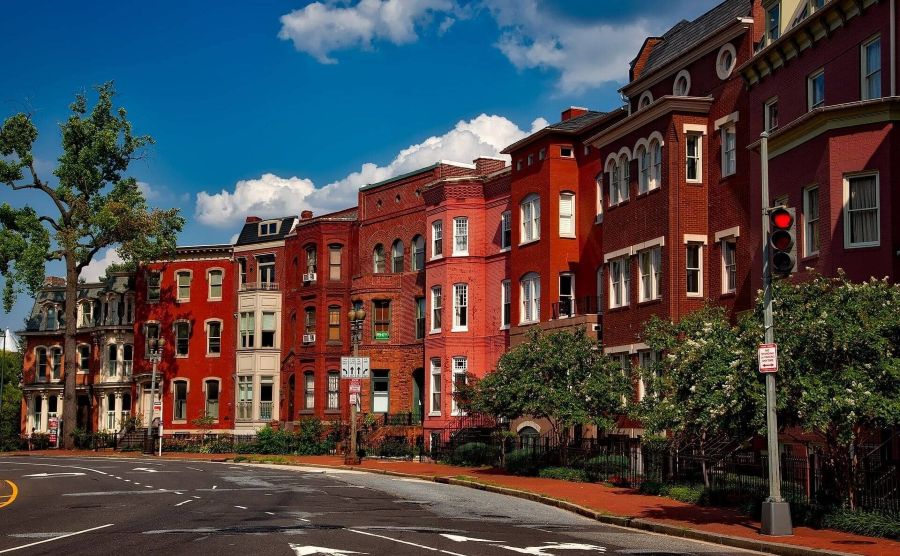
A person needs about $8,800 in DC to maintain the same lifestyle that would cost $6,370 in Baltimore. This big difference affects many daily costs.
Food and groceries cost more in DC’s trendy neighborhoods and upscale markets. Even basic items like milk and bread come with higher price tags.
Health care costs 12.9% more in DC than Baltimore. Doctor visits, prescriptions, and medical procedures all hit the wallet harder in the capital city.
Transportation costs vary between the cities. While both have public transit systems, DC’s Metro can be pricier than Baltimore’s light rail and bus network.
Housing Costs and Trends

Housing creates the biggest cost gap between these cities. DC housing expenses are a whopping 284.6% higher than Baltimore.
The average DC home buyer faces steep competition and premium prices in popular neighborhoods. Many young professionals choose to rent with roommates to afford the city’s high costs.
Baltimore’s housing market offers more bang for your buck. The more reasonable prices let people afford larger spaces or nicer neighborhoods than they could in DC.
Rental costs follow similar patterns. A one-bedroom apartment in central DC often costs more than a three-bedroom home in many Baltimore neighborhoods.
First-time buyers find more opportunities in Baltimore. The lower entry costs make homeownership more achievable for people early in their careers.
Education and Universities
Washington DC and Baltimore each offer strong educational opportunities from prestigious universities to improving public school systems. Both cities prioritize research and academic excellence.
Educational Institutions
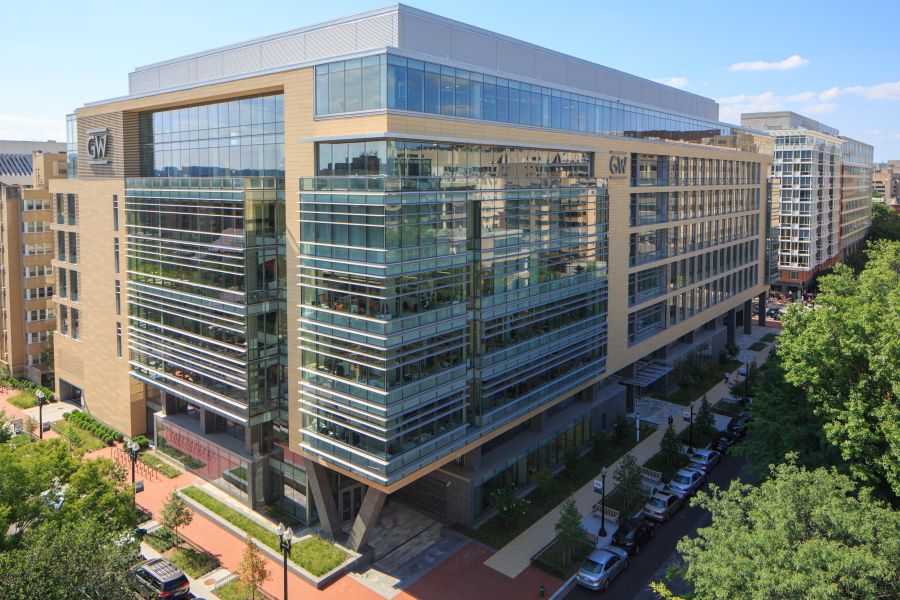
DC’s public schools have made big strides in recent years. The city spends 45% more per student than Baltimore, and classrooms have fewer students per teacher. This means more individual attention for DC students.
Both cities shine in higher education. DC hosts 19 colleges and universities, including 5 research-focused schools. Georgetown University and George Washington University lead the pack in DC.
Baltimore’s crown jewel is Johns Hopkins University, ranked among the world’s top schools. The city also has several other respected institutions like Loyola University Maryland and the Maryland Institute College of Art.
Research and Development
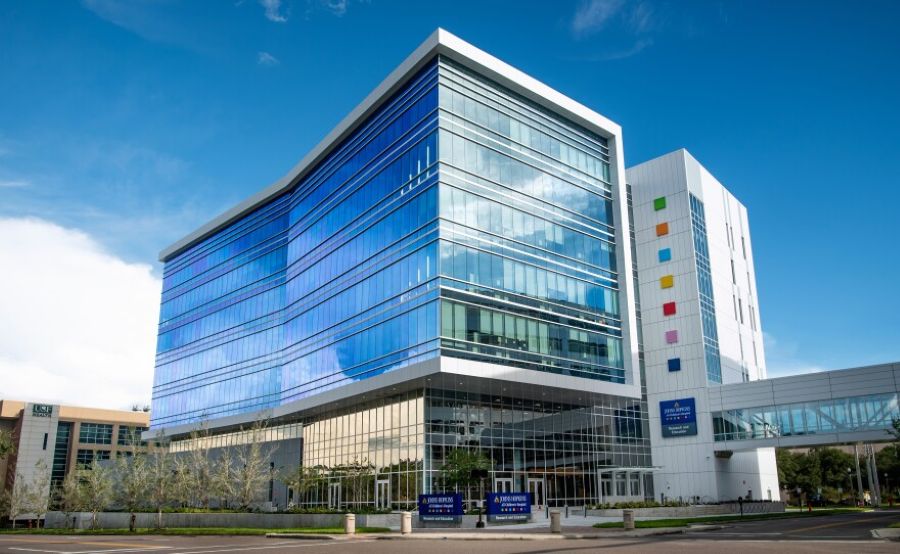
Johns Hopkins drives Baltimore’s research scene, especially in medicine and public health. Their research programs bring in billions in funding and attract top scientists from around the globe.
DC’s universities focus heavily on policy research, international affairs, and government studies. The city’s schools partner with federal agencies and think tanks on groundbreaking projects.
Both cities have strong tech transfer programs that turn university research into new companies and jobs. This creates opportunities for students to work on cutting-edge projects while still in school.
Many graduates stay local after finishing school, feeding talent into each city’s growing innovation sectors.
Public Services and Transportation
Both cities invest heavily in their transportation networks and public amenities, though each takes a different approach to serving residents and visitors. DC stands out with its robust Metro system, while Baltimore focuses on targeted services in key areas.
Transportation Systems
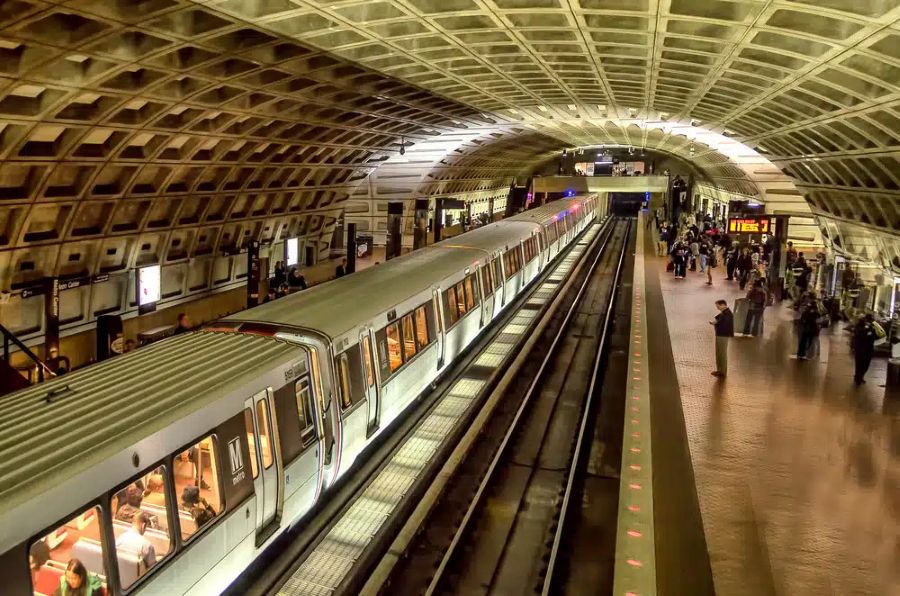
DC’s Metro system reaches deep into Maryland and Virginia suburbs, making daily commutes easier for thousands of workers. The system includes 6 color-coded lines and 91 stations. Book train tickets to DC to explore the city without a car.
Baltimore’s transit options include a Light Rail line, Metro Subway, and extensive bus network. The Light Rail connects downtown to BWI Airport and northern suburbs. Bus routes cover most city neighborhoods.
DC excels at bike-friendly infrastructure with Capital Bikeshare stations throughout the district. Protected bike lanes crisscross the city center.
Baltimore’s bike network is growing but remains less developed. The Charm City Circulator offers free bus service in the downtown area.
Public Amenities

DC maintains numerous public spaces and parks, with the National Mall as its crown jewel. The mall is lined with free Smithsonian museums that offer world-class exhibits to visitors.
Baltimore’s Inner Harbor features waterfront promenades and public gathering spaces. The city also runs multiple recreation centers in residential areas.
DC libraries stay open longer and offer more digital resources than Baltimore’s system. Both cities provide emergency services, though DC’s response times tend to be faster.
Street cleaning and snow removal work more efficiently in DC due to better funding. Meanwhile, Baltimore faces challenges maintaining consistent service levels across all neighborhoods.
Public WiFi exists in both downtown areas, but DC’s network covers more ground. Both cities also struggle with aging water infrastructure that needs updates.
Safety and Crime Rates
Both Washington DC and Baltimore face urban crime challenges, but recent data shows distinct patterns between the two cities. Crime rates and safety measures vary by neighborhood and time of year.
Law Enforcement Strategies
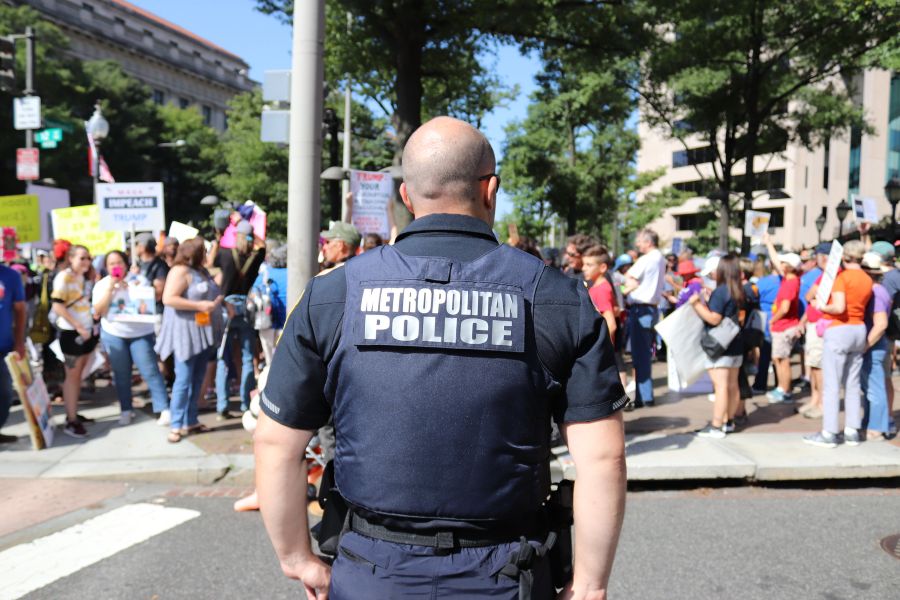
The DC Metropolitan Police Department uses data-driven policing with specialized units targeting high-crime areas. They’ve also added more foot patrols and community liaison officers in busy districts like U Street and Adams Morgan.
Police presence is especially visible around tourist spots and government buildings. DC’s camera network also helps monitor public spaces and solve crimes quickly.
Meanwhile, Baltimore Police focuses on violent crime reduction through focused deterrence. Their crime prevention teams work closely with community groups in areas like Inner Harbor and Fells Point.
Public Safety Programs
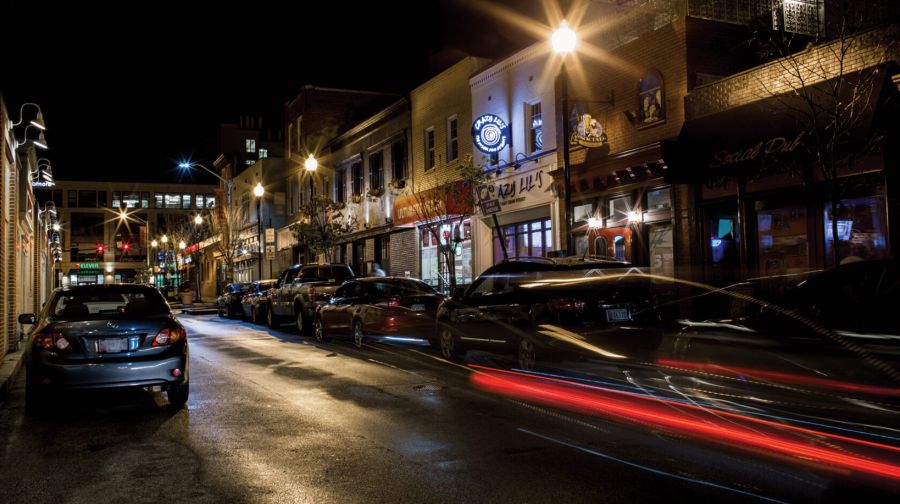
DC runs several neighborhood watch programs and offers safety training for residents and businesses. The city’s Safe Passage program also helps students travel safely to and from school.
On the other hand, Baltimore’s Safe Streets initiative uses violence interrupters to mediate conflicts before they escalate. The program has shown success in reducing shootings in participating neighborhoods.
Both cities have also installed better street lighting and emergency call boxes in high-traffic areas. DC’s private security ambassadors patrol business districts, while Baltimore’s CitiWatch volunteers monitor security cameras.
Recent crime stats show DC’s violent crime rate at 56.2 compared to Baltimore’s 77.8. Both cities are working to improve these numbers through community engagement.
Lifestyle and Recreational Activities
Both Washington DC and Baltimore offer unique experiences in dining and outdoor activities that reflect their distinct cultural identities. Each city brings its own special flavor to the table, from world-class restaurants to beautiful parks and waterfront attractions.
Dining and Cuisine

DC’s food scene mixes international flavors with upscale American dining. The city hosts numerous Michelin-starred restaurants in neighborhoods like Georgetown and Penn Quarter. Many politicians and diplomats frequent these spots, giving them an extra dash of sophistication.
Meanwhile, Baltimore shines with its famous seafood, especially the Maryland blue crabs. The historic Lexington Market serves local specialties dating back to 1782, and Fells Point features cozy pubs and seafood spots along cobblestone streets.
Some notable food differences between the cities:
- DC: Power lunch spots, diverse international cuisine
- Baltimore: Fresh seafood markets, casual crab houses
- DC: Higher average meal prices
- Baltimore: More affordable neighborhood eateries
Outdoor Leisure and Sports

Baltimore’s Inner Harbor offers waterfront activities like paddleboating and harbor cruises. Patapsco Valley State Park also provides hiking trails and fishing spots just outside the city.
On the other hand, DC’s National Mall serves as an enormous outdoor recreation space. Residents enjoy jogging paths and free outdoor museums, and Rock Creek Park offers 1,754 acres of trails and picnic areas.
Popular outdoor activities in each city:
- Baltimore: Sailing, crabbing, waterfront concerts
- DC: Mall walking tours, kayaking on the Potomac
- Baltimore: Ravens and Orioles games
- DC: Nationals baseball, Capital One Arena events
Demographics and Population Dynamics
Washington DC and Baltimore show distinct population patterns and cultural makeup, with DC experiencing growth while Baltimore faces ongoing challenges.
Population Trends

DC’s population has grown by 17.1% since 2000, adding nearly 98,000 new residents. The city’s current median age is 33.8 years, with a slight gender split of 52.5% female and 47.5% male residents.
Baltimore tells a different story. The city has seen seven straight decades of population decline. From 2010 to 2020 alone, Baltimore’s population dropped by 5.7%. Since 2000, Baltimore lost over 74,000 residents, marking an 11.5% decrease.
Cultural Diversity
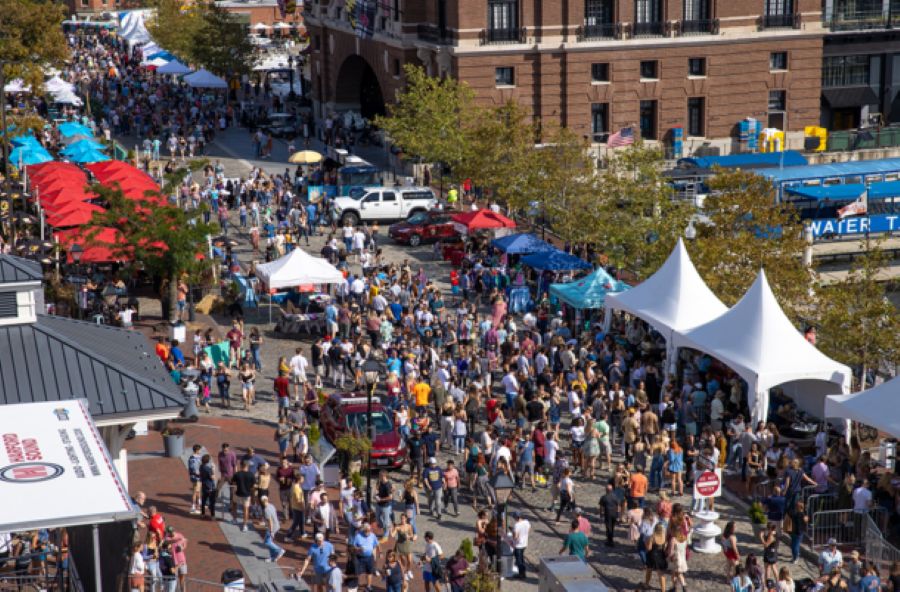
Both cities bring unique cultural identities to the region. The Baltimore-Washington metro area ranks as the 4th largest Combined Statistical Area in the U.S., home to more than 9 million people.
DC attracts a mix of government workers, international diplomats, and young professionals. The city’s population reflects this global influence in its neighborhoods, restaurants, and cultural events.
Meanwhile, Baltimore maintains strong ethnic neighborhoods and traditions from its history as a major port city. Local communities celebrate their heritage through food, festivals, and arts, creating a distinctive cultural landscape.
Frequently Asked Questions
Living in Washington DC or Baltimore presents distinct lifestyle differences, from housing costs to entertainment options, with each city offering unique advantages for residents based on their priorities and preferences.
What are the cost of living differences between Washington DC and Baltimore?
Living costs in Washington DC run about 30% higher than Baltimore. A person needs to earn around $78,000 in DC to maintain the same lifestyle they’d have in Baltimore.
Housing shows the biggest gap between the cities. The median home value in DC sits at $669,900, while Baltimore homes typically cost $193,100.
DC employers tend to pay about 8% more than those in Baltimore, which helps offset some of the higher expenses.
How do the crime rates in Washington DC compare to those in Baltimore?
Baltimore faces more significant crime challenges than DC, particularly in certain neighborhoods. Both cities have made progress in reducing crime rates through community policing and safety initiatives.
Crime rates vary widely by neighborhood in both cities. Many areas in both DC and Baltimore are quite safe, while others need more caution.
Which city offers a more favorable living experience, Washington DC or Baltimore?
DC provides more job opportunities and higher salaries, especially in government and politics. The city draws many young professionals and features extensive public transit.
On the other hand, Baltimore offers a more laid-back atmosphere with cheaper housing and strong community ties. The city has a rich maritime history and distinct neighborhood personalities.
Can Baltimore be considered part of the Washington DC metropolitan area?
Baltimore and DC form separate metropolitan areas but share some overlap. Many people live in one city and work in the other, with commuter trains running between them.
The two cities sit about 40 miles apart. Some suburbs fall into a combined Baltimore-Washington metropolitan region.
Which city is larger in terms of population and area, Washington DC or Baltimore?
DC has a larger population with about 670,000 residents compared to Baltimore’s 585,000. Both cities experience population changes as people move between urban and suburban areas.
Baltimore covers more physical ground than DC. The city’s port and waterfront add to its geographic spread.
How do the entertainment and cultural amenities differ between Baltimore and Washington DC?
DC excels in free museums and national monuments. The Smithsonian museums, National Mall, and Kennedy Center anchor the cultural scene.
Baltimore shines with its Inner Harbor, National Aquarium, and historic neighborhoods like Fells Point. The city offers excellent seafood restaurants and maritime attractions.
Both cities maintain active sports cultures with professional teams. Each hosts unique festivals and events throughout the year.



